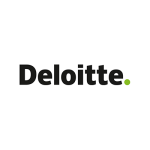The IIR and QDMTT in Norway with effect from 2024
The Norwegian Ministry of Finance published a proposal for the introduction of global minimum taxation rules (pillar two) for consultation on June 6 2023. A new Chapter 20 to the Norwegian Tax Act has been proposed, converting the OECD model rules into Norwegian law. The rules are expected to be enacted before the end of 2023, and they are proposed to enter into force from January 1 2024 with effect for fiscal year 2024.
Norway has proposed to implement the income inclusion rule (IIR) and a qualified domestic minimum top-up tax (QDMTT). The latter ensures that Norway picks up any top-up tax from Norwegian entities. QDMTT is prioritised before the IIR, meaning that a jurisdiction with QDMTT becomes the first in line to receive any top-up tax.
The Norwegian Ministry of Finance has not yet proposed the undertaxed payments rule (UTPR) that operates as a backstop rule to the IIR. However, it has been announced that the UTPR will be introduced later, presumably with effect from 2025. Transitional, permanent, and QDMTT safe harbour rules are also proposed.
Norwegian entities captured
The IIR will apply where the ultimate parent entity of a multinational group is Norwegian and the group meets the consolidated revenue threshold of €750 million in two of the four preceding years. The IIR will ensure that top-up tax is paid to the Norwegian ultimate parent entity in cases where constituent entities have an effective tax rate below 15%. As in the global anti-base erosion (GLoBE) rules, the term ‘constituent entity’ is broad, capturing not only subsidiaries but also permanent establishments and branches.
The IIR may also affect:
A partially owned Norwegian intermediate parent entity with more than 20% of the ownership interests held by a third party; or
A Norwegian intermediate parent entity where the ultimate parent is located in a jurisdiction that has not implemented the IIR.
The proposed rules will also apply to wholly Norwegian groups. Hence, pure Norwegian groups with no possibility of base erosion and profit shifting since all the entities are resident in one country (Norway) may be captured by the pillar two rules and subject to detailed calculations and significant pillar two compliance burdens.
QDMTT will be relevant for Norwegian entities that are part of non-Norwegian-headquartered groups if the Norwegian entities are considered low taxed under the GLoBE rules. Although Norway has a statutory tax rate of 22%, top-up taxation and reporting obligations may arise where a Norwegian subsidiary mainly has exempt dividends and gains from short-term portfolio investments (that do not qualify as exempt under the GLoBE rules).
Based on the current suggested rules, Deloitte Norway has experienced Norwegian companies covered by special tax schemes within the petroleum and energy sector potentially ending up with full pillar two reporting and pillar two taxation liability. Furthermore, Norwegian shipping companies under the tonnage tax regime may be captured by the rules, although shipping income is explicitly exempt under the GLoBE rules. This will occur if such an entity owns, for example, windmill ships or drilling ships that are physically located at a fixed place and not transporting passengers or cargo in international traffic.
Significant compliance obligations in Norway
Under the IIR, the ultimate parent entity will have to report a standardised GLoBE information return (GIR). The GIR is a separate form from the Norwegian corporate income tax return. As part of the pillar two rules, payment and reporting of top-up tax shall, as a starting point, be carried out by the ultimate parent company as a one-stop shop.
To minimise the complexity of detailed GLoBE calculations and ease the compliance burden, safe harbour rules have been introduced. However, in practice, several jurisdictions will implement QDMTT, ensuring that the top-up tax is paid to their jurisdiction.
The consequence of QDMTT being introduced in many countries is that the compliance burden is not eased. Compliance becomes even more complicated since multinational groups have to keep track of what type of QDMTT rules each jurisdiction within a group implements.
Although QDMTTs need to be in line with the OECD model, jurisdictions are free to implement local rules that are stricter than the OECD model rules. Thus, a group that is covered by the pillar two rules would need to understand the content of each jurisdiction’s QDMTT and ensure compliance with local QDMTT reporting obligations. For multinational groups, this may entail having to carry out multiple pillar two calculations and reporting obligations.
It is understood that pillar two will be administratively handled by the ordinary tax authorities and governed by the Norwegian Tax Administration Act with required adjustments. Thus, ordinary rules on penalties for late filing and tax appeals, etc. would apply. There will not be a possibility to request a binding ruling from the Norwegian tax authorities related to pillar two.
Although the first GIR might not be due in Norway before 2026, information concerning the impact of pillar two shall be disclosed in the financial statements for 2023 for the Norwegian ultimate parent entity. The financial statements for 2024 shall contain information about tax cost under the pillar two regulations.
Next steps
If you have not already started assessing the impact of the pillar two rules for your group, it is highly recommended that you start planning for the significant calculations and reporting obligations that lie ahead. Identifying if any safe harbour rules can be applied would be a good place to start.













